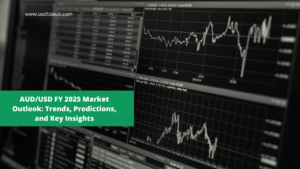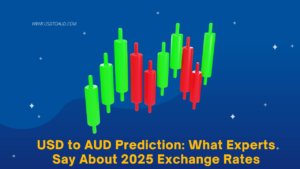The USD to AUD exchange rate is a crucial concern for frequent travelers, expatriates, international students, travel agents, and budget-conscious tourists. Understanding why the rate is falling and the latest market insights can help you make informed financial decisions.
This article explores the key reasons behind the decline and provides actionable tips for navigating currency fluctuations.
Why the USD to AUD Exchange Rate Matters
The USD to AUD exchange rate impacts a wide range of financial transactions, including travel expenses, tuition fees, and remittances. Here’s why it’s essential to keep track of this currency pair:
- Travel Costs: A weaker USD means less AUD for your dollars, increasing travel expenses.
- Expatriates’ Income: Expats earning in USD may see reduced purchasing power in Australia.
- International Students: Changes in the exchange rate can significantly impact tuition fees and living expenses in Australia.
Key Factors Behind the Falling USD to AUD Rate
1. Economic Indicators
Several economic indicators play a significant role in the USD to AUD exchange rate. Here’s a breakdown:
- Interest Rates: The Reserve Bank of Australia (RBA) has been increasing interest rates, making the AUD more attractive to investors.
- Inflation Rates: Australia’s inflation control measures have strengthened the AUD compared to the USD.
- GDP Growth: Australia’s economy has shown resilience, boosting the AUD’s value.

2. U.S. Federal Reserve Policies
The U.S. Federal Reserve’s monetary policy decisions can also impact the USD to AUD rate. Recent decisions to pause or slow interest rate hikes have weakened the USD.
3. Global Commodity Prices
Australia is a major exporter of commodities like iron ore and coal. Rising global commodity prices have supported the AUD’s strength, contributing to the USD’s relative decline.
Political and Geopolitical Influences
1. U.S.-China Relations
Australia’s economy is closely tied to China’s economic performance. Improved U.S.-China trade relations could stabilize the AUD, while tensions may lead to volatility.
2. Australian Government Policies
Policies aimed at promoting economic growth, such as infrastructure investments and trade agreements, have supported the AUD.
Expert Market Insights on USD to AUD Trends
Commonwealth Bank of Australia
The bank predicts a continued strengthening of the AUD due to rising commodity prices and Australia’s economic growth.
Westpac Bank
Westpac forecasts minor fluctuations in the exchange rate, influenced by global economic trends.
ANZ Bank
ANZ expects the USD to remain under pressure, with a slightly stronger AUD due to Australia’s economic resilience.
How to Get the Best USD to AUD Conversion Rates
1. Compare Exchange Providers
Different providers offer varying rates and fees. Use comparison tools to ensure you’re getting the best deal.
Popular Providers:
- Wise: Offers competitive rates close to the mid-market rate.
- OFX: Suitable for larger transfers with no transfer fees over a certain amount.
- Revolut: Offers mid-market rates with limited free exchanges.
2. Monitor Exchange Rate Trends
Use tools like XE.com and Bloomberg to track real-time exchange rates and set alerts for favorable rates.
3. Avoid Hidden Fees
Hidden fees can eat into your conversion amount. Always read the fine print and avoid dynamic currency conversion (DCC) when using cards abroad.

Timing Your Currency Exchange
Timing your currency exchange can significantly impact the value you get. Here are some tips:
- Monitor Trends: Watch for upward trends in the USD to AUD exchange rate.
- Set Alerts: Use apps to get notified when the rate reaches your target.
- Consider Forward Contracts: Lock in a favorable rate for future transactions with services like OFX.
Common Mistakes to Avoid
Avoid these pitfalls to ensure you get the best value for your money:
- Exchanging at Airports: Airport kiosks often have the worst rates.
- Ignoring Fees: Always check for hidden fees.
- Not Comparing Providers: Use online tools to find the best rates.
Conclusion
Understanding why the USD to AUD rate is falling requires analyzing economic indicators, geopolitical events, and market trends. By staying informed and following best practices for currency exchange, you can make smarter financial decisions and minimize the impact of unfavorable rates.
Ready to take action? Start comparing exchange rates today and plan your financial future with confidence.
FAQs
What causes the USD to AUD exchange rate to fall?
Economic indicators, interest rates, and global events are key factors. Policies from central banks like the RBA and the U.S. Federal Reserve also play a major role.
How can I get the best USD to AUD exchange rate?
Compare providers, monitor trends, and avoid hidden fees to secure the best rates.
Is it safe to use online money transfer services?
Yes, reputable services like Wise, OFX, and PayPal are secure and regulated.
Can I predict the exact exchange rate for the future?
While predictions can provide insights, exact rates are impossible to guarantee due to market volatility.
Should I exchange money now or wait for a better rate?
Monitor trends and set rate alerts to determine the best time to exchange currency.

















